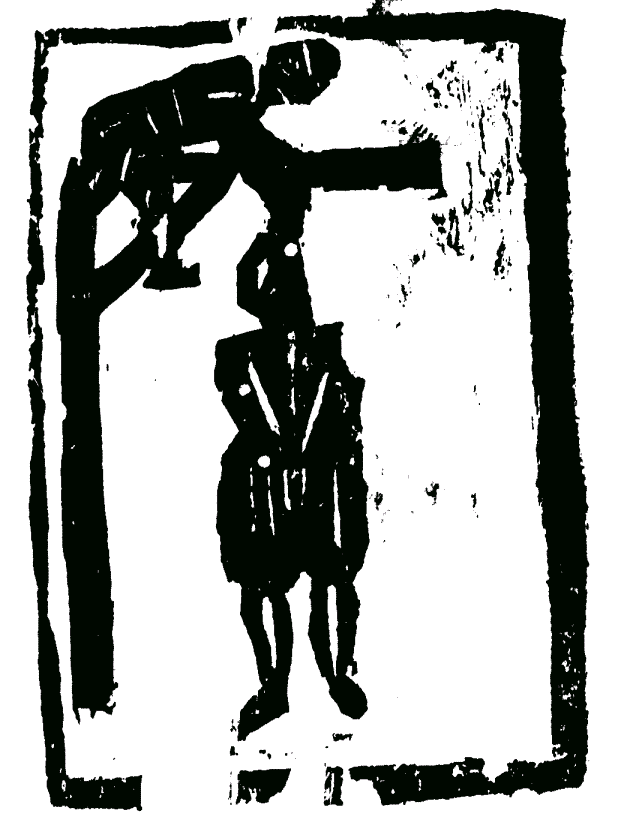


|
The Campden Wonder |

|
||
| "Time, the great Discoverer of Truth, shall bring to Light this dark and mysterious Business" | ||||
|
|
|
|
|
|
This section attempts to bring together the statements of various witnesses regarding the events of 16th-17th August 1660 and to analyse their credibility in the context of other sources.
In an age before people carried watches, the times mentioned in various accounts are often gauged according to the rising of the sun or the moon. The precise astronomical facts can of course be calculated and compared with the testimony of the witnesses in the case.
The other source of information regarding the time that would have available to John Perry and the other people questioned would have been the Chipping Campden Church Clock. A clock mechanism dating from 1695 is preserved in the church to this day, although a new clock was installed in 1962. However, the church guidebook states that the church has possessed a clock since "the early 17th century". Certainly, there is mention of the clock striking in Overbury's account. It seems likely that anyone in the vicinity of the church would know the time by the hourly striking of the clock. This is probably why times in the story are given in the form "between eight and nine of the clock".
The events of August 1660 are crucial to the story of the Campden Wonder, yet they can be difficult to follow from Overbury's account. Perry's account of his movements and actions that day and the next is particularly confused and confusing.
| Date | Time | Source | Event | Comments |
| Thursday 16th August 1660 | In the afternoon | Harrison's account published by Overbury | Harrison goes off to collect the rent money. | |
| 19:06 | Astronomy | Sunset | ||
| "till the close of the evening" | Harrison's account published by Overbury. | Harrison is delayed in Charringworth. | ||
| 19:45 | Astronomy | Twilight | ||
| 20:00-21:00 | Overbury | Harrison fails to return home when expected and his family becomes concerned. John Perry is dispatched to look for him. | ||
| 20:00-21:00?
|
Perry's | Perry goes only a few hundred yards towards Charringworth, speaks to Reed and tells he does not want to go any further alone because it is getting dark. They return to the Harrison's garden gate. | ||
| 21:00-22:00?
|
Perry's | Perry meets Pierce and goes a few hundred yards out in to the fields with him, before returning to the gate again. | ||
| 22:31 | Astronomy | Moon rise | ||
| 23:00?
|
Perry's | Perry goes into Harrison's hen house to lie down and stays there about an hour until "the clock struck 12". | If it was still dark when he entered the hen house, as Perry claims, then it must have been before moon-rise at 22:31. However, it does not seem unnatural for Perry to have understated the amount of time he spent lying in the hen house. It was probably more than an hour. Certainly, his wanderings with Reed and Pierce are unlikely to have occupied him for over two hours. | |
| 24:00-04:30 | Perry's original | Perry leaves the hen house and walks in the direction of Charringworth. It gets misty and he loses his way, and spends the rest of the night under a hedge. | ||
| Friday 17th August 1660 | 04:35 | Astronomy | Twilight | |
| Early (before 05:00) | Overbury | Edward sets off to look for his father. | ||
| About 05:00 | Perry's evidence related by Overbury | Perry and Edward meet on the road to Charringworth. | ||
| 05:11 | Astronomy | Sunrise | ||
I am grateful to Tricia Brown of the Bristol Astronomical Society for her help in obtaining the information listed below.
In the course of Overbury's account, several "astronomical" facts are referred to, and these are of some significance in determining the exact times of certain events and the possible veracity of certain statements. For example, John Perry claims that when he entered the hen roost there was no moon, but when he left at midnight, the moon had risen. He also states that he rose the following morning at daybreak, walked into Charringworth, talked to two people and walked back towards Campden, all before meeting Edward Harrison around five a.m.
The times of the rising and setting of the sun and the moon can of course be calculated precisely. However, this calculation is complicated by the fact that in 1660 England was still using the old Julian calendar. It was not until 1752 that Britain adopted the Gregorian calendar in use on the continent. By 1752, the two calendars were adrift by 11 days, but in 1660 the difference was only 10 days (1700 was a leap year on the continent but not in England). This means that when checking astronomical almanacs, we need to ensure that we use the correct calendar. To determine the astronomical details for 16th August 1660 (Julian calendar), we need to look up 26th August 1660 (Gregorian calendar).
Also, it must be borne in mind that until the coming of the railways some 200 years later, most parts of England operated on "local time", which, in Chipping Campden, would have been perhaps some 5-10 minutes ahead of GMT.
The first thing that astronomy can tell us is that 16th August 1660 (Julian calendar) was indeed a Thursday.
Next, the following information for the rising and setting of the sun and moon can be calculated. Dates are given in the Julian calendar and times are measured in GMT (these could be 5-10 minutes later than local time).
| Sun | Moon | ||||||
| Date | Twilight | Rise | Set | Twilight | Rise | Set | % |
| 16th August 1660 | 04:33 | 05:09 | 19:06 | 19:42 | 21:51 | 00:28 | 61 |
| 17th August 1660 | 04:35 | 05:11 | 19:04 | 19:40 | 22:31 | 01:31 | 51 |